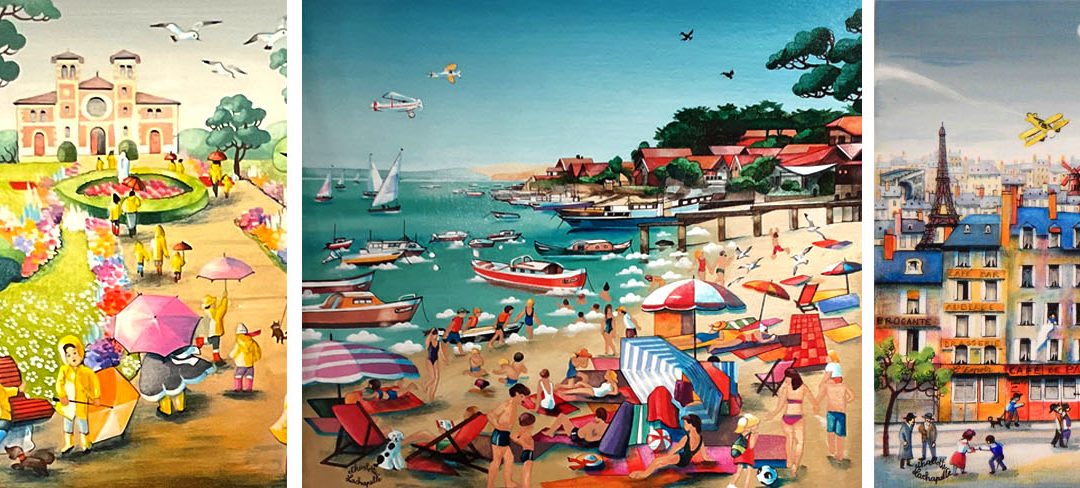
Aug 15, 2016
Charlotte LACHAPELLE is born in 1955 in Souillac in the Lot.
His childhood was rocked by the length of the Quercy.
Founding member of the Group Modern Primitives “said Naifs”
Salon d’Automne International Art Salon Naif Paris. Associate of French Artists.
Group exhibitions:
CROISSY – PAU – MOUGINS – Vaison la Romaine – MEGEVE – Anglet – Belgium – England – Switzerland – USA – CANADA – JAPAN – GERMANY – SPAIN – ITALY.
Museums:
Museums Sherbrook: CANADA
Naif museum Lannes: BELGIUM
Museums of Art Naif Max Fourny, the Halle Saint-Pierre Paris
Museums of Art Naif of the Ile de France to Vicq.
Founding member of the primitive painters group , his work is presented in various museums , is a serenade to happiness. It communicates a sense of peace , tenderness and freshness. It is a testimony of sensitivity , it is a poetic look , these are the states of mind of an artist who has definitely chosen to slam the door in the gloom.
rewards:
First Audience Award, International Exhibition, Nancy, 1988.
Knight with Academic Palms Silver Belgium.
Switzerland Price with Special Mention.
Medal of the City of Orléans
Television :
FR 3 Champagne
An enchanted and enchanting world, that of Charlotte LACHAPELLE.
In this artist, all plastic elements are represented: the composition, balance, color harmony; and despite perfection, nothing is static, everything sings, free, vibrate under our eyes.
Charlotte LACHAPELLE is present on the New edition of BENEZIT, Volume VIII, page 127. Edition Gründ 1999.
“For me painting is above all a pleasure . Fun to contrast colors or soften in pastel shades , to degrade . Pleasure to camp in my characters a gesture, an attitude and stage all.
Pleasure to compose all the elements, with obsolete items familiar , unusual . Pleasure to share with you and draw you into the magical world of childhood memories, in a world in brackets , idealized , tender and nostalgic, to the magic of a happy world . ” Charlotte Lachapelle
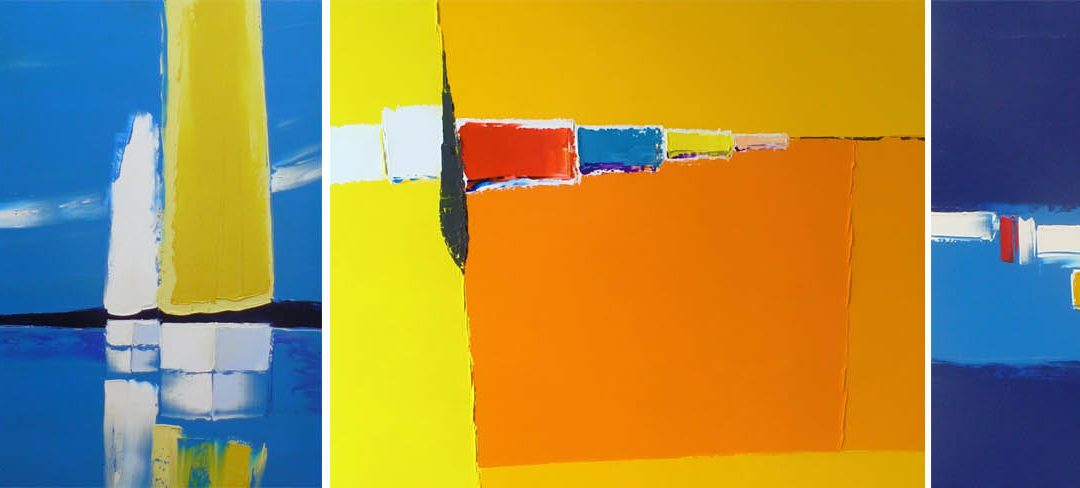
Aug 15, 2016
Guy Fontdeville was born April 2, 1947 in Toulouse.
A graduate of the School of Fine Arts in Toulouse.
Exhibitions :
1989-2011: Salon des Artistes Southerners – Toulouse
1992 Salon d’Automne – Paris
1994: European Fair International – Montreux
Creating Posters:
1991: Displays Regional Tourism Committee Midi Pyrenees.
1995 Poster Fight against cancer, Centre Claudius Régaud – Toulouse.
1996: Displays the Atlanta Olympic Games (USA).
References :
Painters and sculptors of the great Southwest – Art publishing “Regards” Art in all its forms: Painters and sculptors of Midi -Pyrenees – Edition ” Fusart ” Masters in Provence – Publisher: Monique Dijaux – Emieux Painting
Painting Fontdeville penetrates us , we invaded , fills us … the material is silky and beautiful, bold color in his reports …
“Bruises unfathomable to the most ardent orange, Fontdeville works in the dough and fresh, generously, in large flat areas in momentum, the dynamics of gesture and knife. ”
The work of Fontdeville targets informed art lovers … His technique is based on the essential criteria: the mastery of sign, the drawing invisible at first glance there is nevertheless essential base that will disappear under the spatula, mix, mixed work and painting.
As in literature, find the right words to say essentially it is the same in painting Fontdeville, the “write” facilitated by eliminating unnecessary details … great art, spontaneously go to the aim, in a soaring notes sound flat areas treated with flexibility.
Guy Fontdeville dare colors! All colors without limit. It makes them live so they talk to meet and talk to us.
Blue unfathomable to the most ardent orange, Guy Fontdeville works in the dough and fresh, generously, in large flat areas in momentum, the dynamics of gesture and knife.
Attentive to the purity of the online access to the most subtle confines of balance. Jean -Louis April (Univers des Arts).
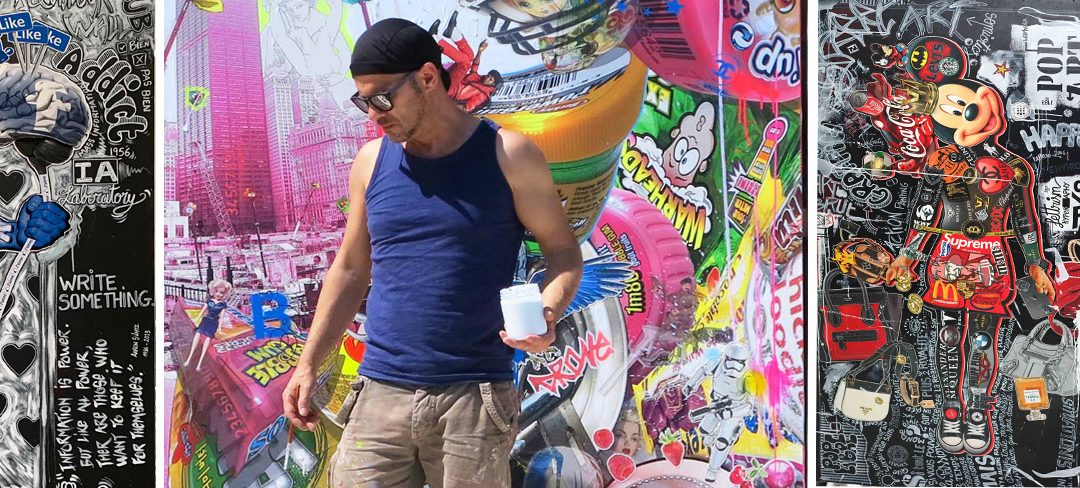
Aug 11, 2016
Cintract David was born in 1970.
Halfway between Warhol and Lichtenstein, the artist projects his vision of consumer society on all media : paintings, dolls or mannequins.
While paying tribute to the great artists Pop, David Cintract has stood out thanks to his strong personality, becoming a key figure in the movement that he founded: “The Pop free.”
David Cintract has a fascination for the exuberant sculpture and storage works so “Aladdin’s cave”.
Inspired by current events and social issues, his work carries with it the ambiguity of a quirky, childlike artistic universe, the tinted optimism tragedy.
Gaiety of colors and patterns, sparkle and communicative joy, but also depth of questions and symbols, such is the David Cintract trademark of refusing ease and laying discrete connections between very poetic forces and darker impulses.
Using techniques as diverse as oil, photo, inclusion or digigraphie, it develops on all media (paintings, models, cars …) several themes at the heart of our postmodern society:
-L’homme Face a frantic and frivolous consumption
-The Place of the fantasies and erotic adult games
-The Loss of our part of childhood in a society that no longer believes in dreams
David Cintract sets worldwide and, thanks to its universal artistic language, nourishes deep exchanges with audiences from all backgrounds and all cultures.
Interview by Mr DAVID CINTRACT LIVE:
“My art reigns in me, but does not rule me”
DJ image and matter, David Cintract is defined as a visual artist and existential touch.
Multisensory, it passes with disconcerting ease of traditional painting techniques with modern technologies such as digigraphie, photography, the inclusion of other products / toys …
Through its mannequins that “dandyse” its Mutantoy’s Candy Box and he makes of individuality in the manufactured and deposited his poetry in the series of objects.
Q: “Is being an artist is obvious to you”?
Art and philosophy are to me the best way to aesthetize my existence. With these two means of expression and reflection, I was able to optimize my tragic optimism and reverse the general neuroticism contemporary works. My wish is to deal with company or topical subjects more or less serious, and to attempt a democratic and positive transcription. For me it is a fun way to play with images and frivolous objects that recall childhood with filigree the finding of a report obsession we have with frivolous consumption, fueled by advertising constantly renewed. This work brings me also to wonder if happiness would not exhausted the pleasure of consumption
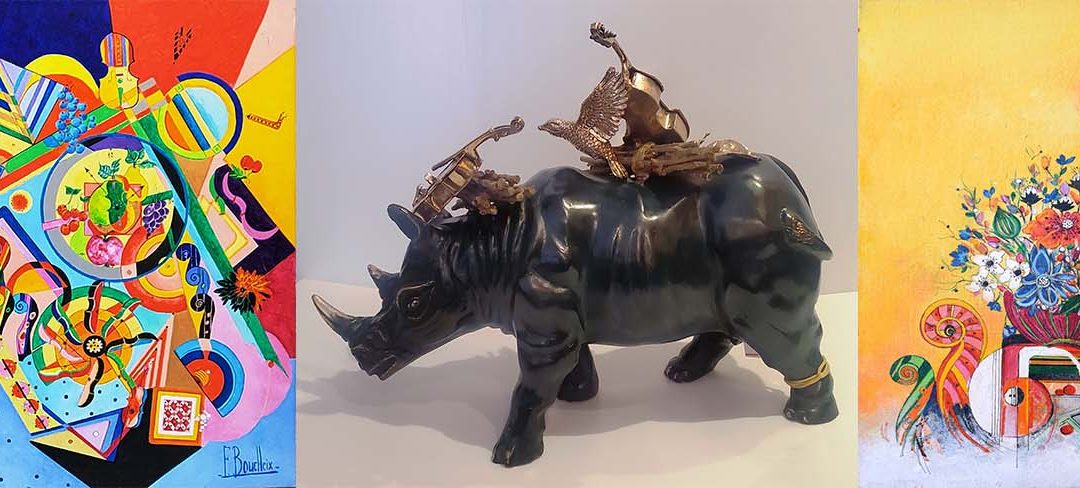
Jun 4, 2014
François Boucheix was born January 7, 1940 to Montcheneix, a small village at the foot of the Monts d’Auvergne. He began drawing very young. Fatherless at 15, he has to learn a different profession of his artistic aspirations. Malgrè the hard work of the day, he held the evening and part of his nights to paint, and his days of freedom.
At 17, supervisor at Marist in Riom, he as a neighbor room the painter Jean de Rocca Serra, Rome Prize and former professor at the School of Fine Arts in Florence, who taught him the painting for a year.
He made his first exhibition in February 1960 in Tunisia, then in Auvergne province in particular and in the south of France. Four years in Chamonix, where he reads an advertisement in a national newspaper, the gallery seeks Sèvres painters. It responds to the announcement by sending photographs, and shortly after he learns he is retained.
It manifests itself in Paris in 1963 at a major exhibition at the Galerie de Sèvres where he met Bernard Bellaïche. From 1966 to 1972 he regularly exhibits in this gallery notably Lebasque, Othon Friez, Dignimont, Crau Salaboudet Madeleine Luka, Marie Laurencin and the paintings of Salvador Dali and Foujita.
François Boucheix offers a surreal view of the world with total freedom of inventive richness and wonder gift that keeps intact his fidelity to his roots and his land Auvergne. [Not neutral]
Bernard Bellaïche he meets Salvador Dali and that day everything changed. Dali tell him “your painting is good … besides she likes to Gala. ”
This is a result of a famous exhibition at the Sèvres gallery in Paris “Dali to Boucheix” with paintings by Meissonier he decides it will be a surrealist painter of dreams and happiness and not a sad surreal .
He also met with the Sèvres gallery of Yasmine Ouezan, friend of the arts at all Paris of that time, the meeting will pass 30 years of friendship.
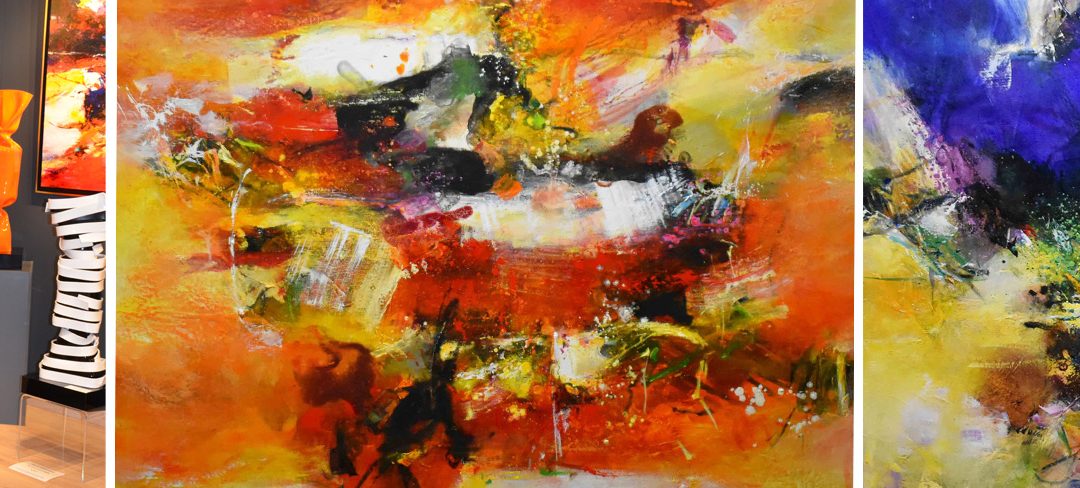
Jun 3, 2014
Chhour Kaloon was born in 1968. His family lives in Hong Kong is original Chinese province of Canton. It is now a French citizen and lives and has his studio in Nice.
After studying at the Hong Kong Art Academy, he attended painting classes in Paris, where he discovered and is passionate about the Great Impressionist masters, who themselves were inspired by Asian art. Her style is figurative but in the beginning it is rapidly moving towards Impressionism and Fauvism.
He remains true to this style for many years but at 35, shortly after his arrival on the French Riviera, it radically evolves towards abstraction while maintaining its palette of strong colors, the power line, the harmony of volumes, an underlying calligraphy and the technique of oil painting.
Chhour Kaloon like the warm colors: yellow, orange also strong colors like black, red. In fact, these paintings are colorful, powerful.
His paintings are highly technical and structured with glaze, the dripping, leaks, use mediums of different brushes and knives but Kaloon Chhour all this is a set of resources to research the agreement volumes, colors emphasizing the feeling on form.
Kaloon Chhour exhibited in numerous galleries in France and abroad (SHANGHAI – PARIS – NICE ….)
He is a member of Amber International, Academy of Fine Arts in Provence Côte d’Azur and is Academician of the Accademia Internazionale Greci Marino.
Chhour is the revelation of poetic abstraction by combining Impressionist and Asian influences.
Renowned among amateurs, his work is present in many prestigious collections worldwide.
Kaloon Chhour recently been the subject of a laudatory article in the prestigious artist Gazette Drouot animated by a rare knack for harmony compositions and colors, it offers us an original work that acts as a mirror to emotions.
It is touted as a successor of Zao Wou-ki and Chu Teh-chun and whose listing on the market only upwards.
Page 10 of 11« First«...7891011»







